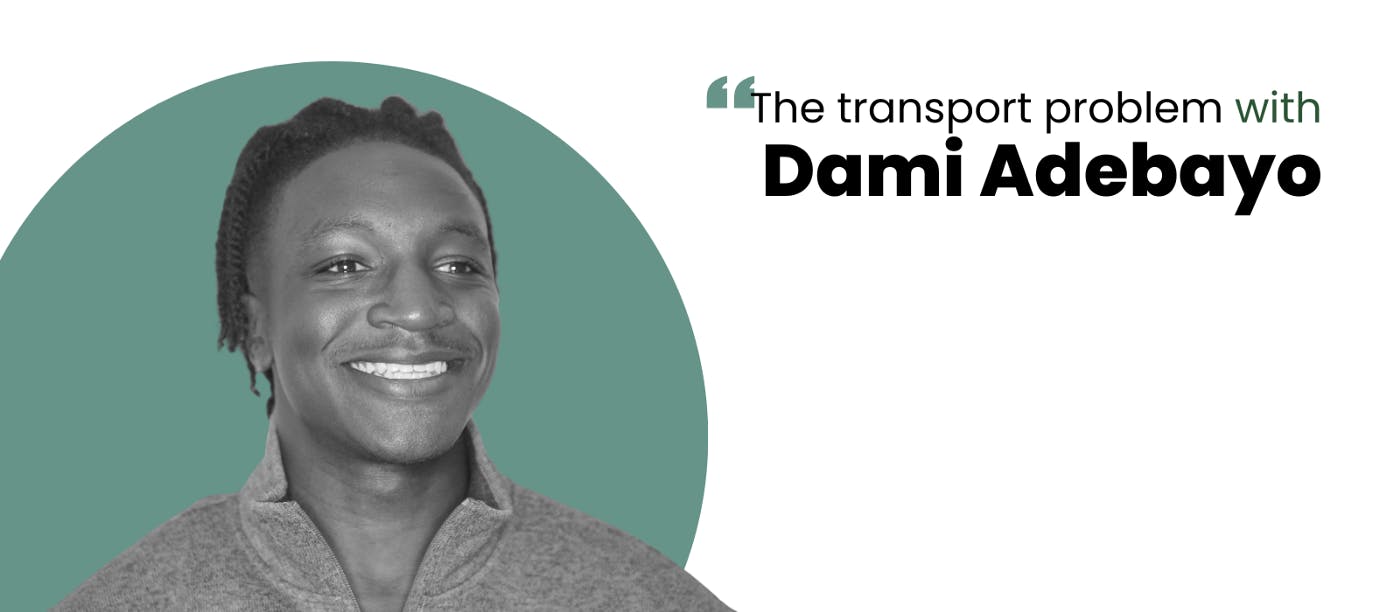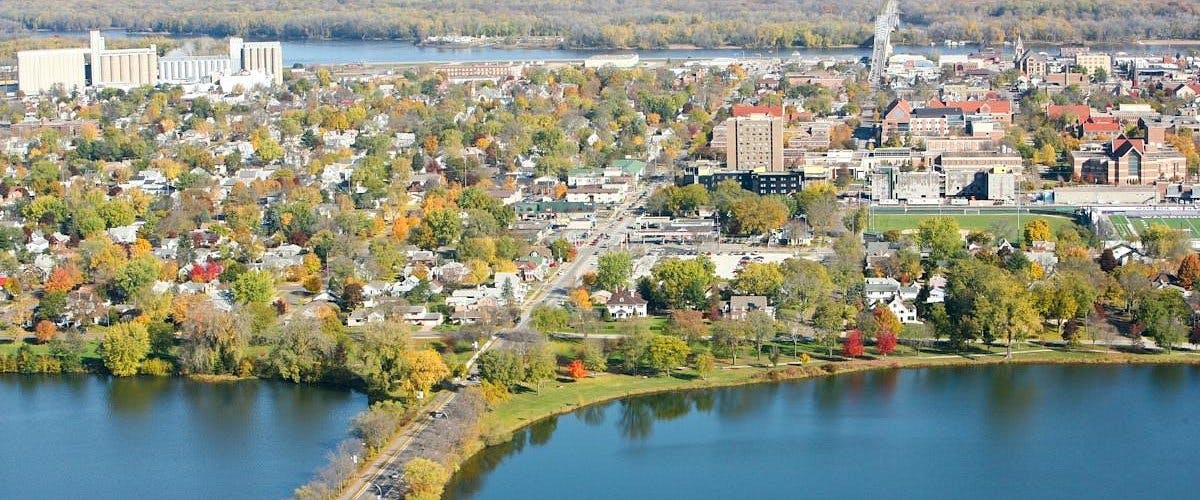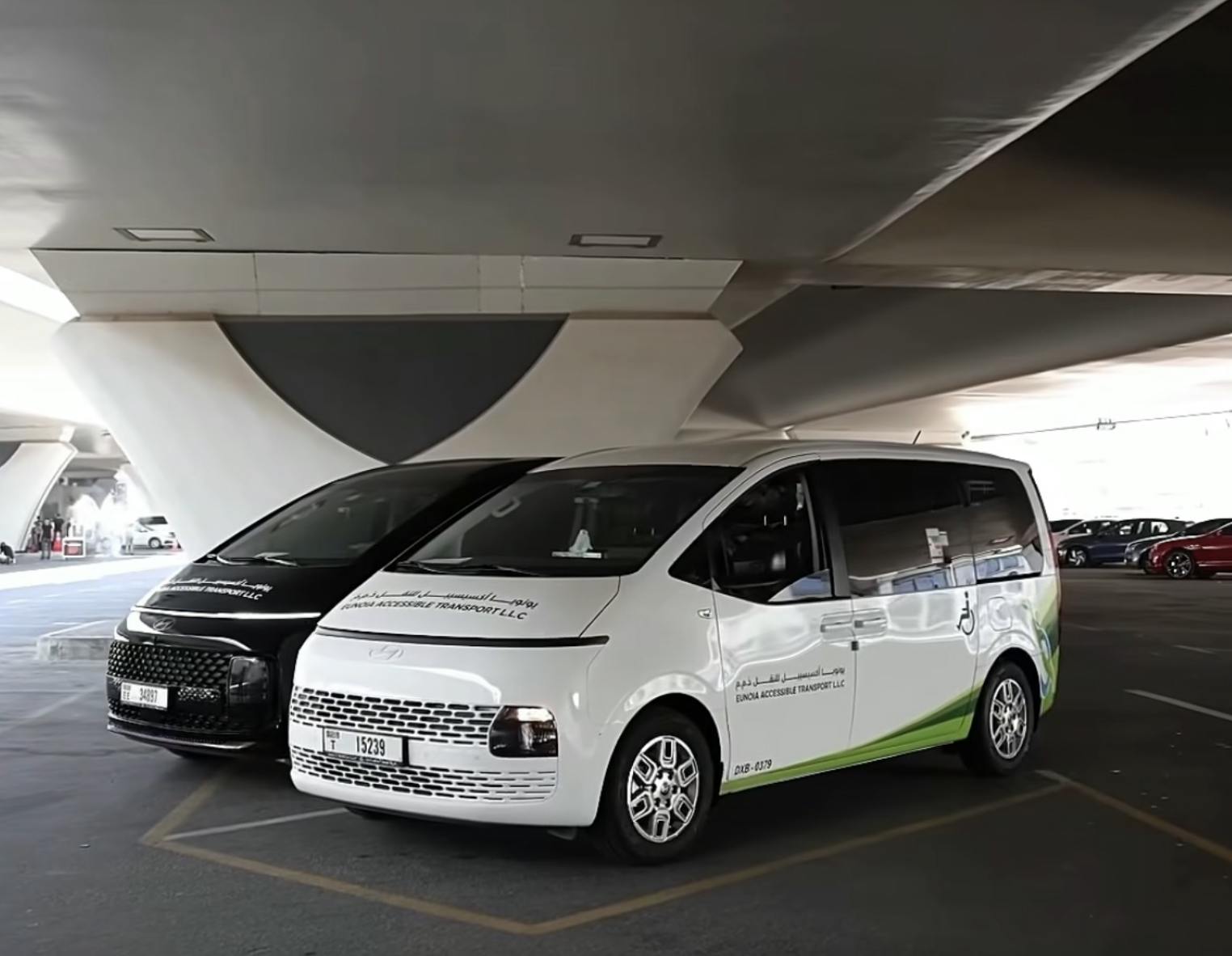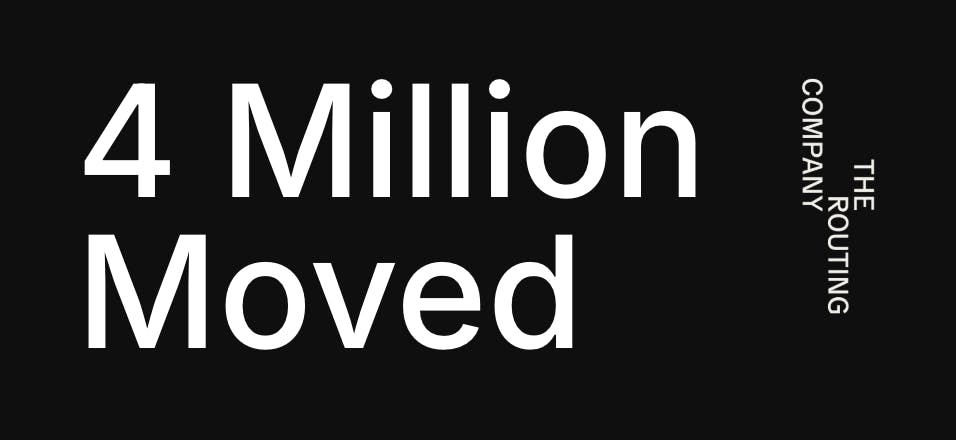
Life at The Routing Company: Dami Adebayo on “the Transport Problem”
In this interview, Europe Partnerships Lead Dami Adebayo talks about day-to-day life at The Routing Company, why he decided to join the company, and what he considers to be “the transport problem”.
This interview is the first in a series highlighting the people powering The Routing Company around the world.

What do you do at The Routing Company?
I’m part of the Movers team. The Movers is what a traditional company would call the business development team. We decided to call our team the Movers because it’s a better representation of what we do: we’re trying to move organizations to rethink how they deliver transport services, not simply trying to sell our product. We consider ourselves innovative partners to our clients — where our shared aim is to find new, effective ways to get people onto public transport and out of single occupancy vehicles. My role is focussed on driving those partnerships with transport authorities, fleet operators, and private transport providers.
Why did you decide to join TRC?
The Routing Company’s mission was the main reason I decided to join. The most sought-after skill in my previous consulting role was problem-solving, and my colleagues were most likely fed up with me always talking about the transport problem. It’s a problem I’ve been intellectually engaged with since my school years, and one I face every day when ‘simply’ getting from A to B. I decided to join The Routing Company because I felt that I finally had to commit myself to trying to solve that problem full time.
What is the “transport problem”?
For me, the transport problem centers around the issues with private car ownership. The big issue that started me off was safety: the number of people who die or are injured in car crashes every year is appalling. Most crashes are caused by human error — by people driving recklessly or drinking and driving, leading to accidents with pedestrians, cyclists and other vehicles. Transit helps to solve that. With public transit, more people are moving in a single vehicle with highly trained drivers, so the likelihood of those things happening reduces significantly.
A high level of private car dependency also leads to a sustainability problem. A single occupancy vehicle is so environmentally inefficient. We need to shift more people to using shared modes of transport, so that’s another aspect of the problem that public transport can help to solve.
There is also the access and inequity problem in transport, which can be considered in two different ways. Firstly, our transport systems frequently fail to meet the needs of disabled passengers, whether that’s wheelchair users, people with reduced mobility or those with hidden disabilities. These individuals are far too often excluded from being able to use traditional public transport and require personal driving services to get around. Secondly, transit plays an incredibly important role in terms of everybody’s access to jobs, opportunities, local amenities, and other communities. If someone can’t afford or access a car, transit helps to solve that. However, transit today typically cannot cover every corner of a community. That means there are pockets of communities who will continue to find it harder to participate in society.
The last problem is around productivity. Private cars lead to a lot of congestion. Lots of people waste hours sitting in traffic every day, which is not only unpleasant but also has economic ramifications. Transit helps to resolve that, but equally is negatively impacted by congestion issues: if a bus is stuck in that traffic, people don’t want to use the service. Solutions like bus rapid transit lanes exist to resolve this, but again the root issue is transit competing with private cars on the road.
To me, the transport problem touches almost everything. That’s why I wanted to join TRC — because I feel we are trying to solve it in a unique way!
What is, or has been, your personal experience with transit?
I move around any city I’m in quite a lot. I’m quite a sociable person and I like to be mobile. I like being on a bus and being able to see everything, and skipping through traffic when you’re in a bus lane. I also cycle a lot — I feel like I can get the personal freedom that a car might give from a bike, plus the added benefit of staying fit and healthy. When I need to cover longer distances, I’ll hop on a bus or a train. My favorite app is Citymapper. I find myself always trying to find the fastest way to get wherever I’m going. That’s one of the reasons I’m so excited about a new feature we’re working on at the moment — I want to start using our own product to move around cities. I am a believer in public transit, but I can sometimes find it frustrating in its current form.
What excites you most about working at The Routing Company?
The product we have is awesome. That excites me a lot. The most exciting thing about the product is who we’re building it for. We have two main ‘customers’ at TRC: the end user and the transport provider. I was drawn to work here because of the former. I wanted to work on a product that touches peoples’ daily lives — transport is a great space to be in if you want to have that sort of impact.
Since joining, I’ve found it increasingly fascinating trying to figure out how to use technology to level up organizations that provide mass transit services, particularly on the public sector side: for example, municipalities, transport authorities, and bus operators. I think it’s a very interesting and nascent space. We speak a lot about the digitization of different sectors, and how technology is proliferating across the world, but the public sector is one area which has been slower to adopt new technologies. Working at The Routing Company, that’s our entire MO. We’re pushing to put our groundbreaking technology in the hands of those who can have a large influence on their communities. Ultimately, when you look at how private sector direct-to-consumer mobility companies are trying to solve this problem, you’re limited in terms of what you can accomplish. By going down the public route, the potential and scope for change is limitless.
What does an average day at The Routing Company look like?
There is no average day! I work remotely from London out of coworking spaces, and I like visiting different locations to switch it up physically. Task-wise, my days also vary quite a lot. Within the Movers team, our main focus is meeting and speaking with our customers — whether that be transit agencies or fleet operators. That involves forming genuine relationships to better understand their problems and figuring out how TRC can help them. I also spend a decent amount of my day writing — putting together proposals, or tailoring presentations and communications for a particular type of client.
I spend a lot of time brainstorming and sharing learnings within the Movers team, but also with the Product and Operations teams as well. We have a strong line of communication with the Product team. We share customers’ latest demands in order to help the Product team figure out what new capabilities our product needs and then factor that into our development roadmap. We speak to Operations to get a better sense of the day-to-day usage of our product and how our customers react to it. That allows me to communicate with clients more intentionally. I don’t just want to sell them some software and leave: I actually want to deeply understand the problems they face and figure out how they can get the most out of our product.
Working at a startup means that, even beyond my team and my job description, I’m working on a bunch of other projects too. That’s another reason why I joined The Routing Company.
What is one opportunity you see for the transit industry?
Looking for the silver lining in a big problem, the climate crisis represents a massive opportunity for the transit industry to redefine transportation norms. There’s so much buzz around net zero targets, but transit agencies have the potential to change that buzz into an achievable goal by getting more people onto public transit. Transport counts for a significant proportion of greenhouse gas emissions globally. A very significant proportion of that comes from single occupancy vehicles. Public transit and other sustainable modes of transportation — like bikes or walking — have existed for a long time. We don’t need to reinvent the wheel. We just need to find more creative ways to deliver and promote these services. If we do that, we’re really going to be able to move the needle.
When transit agencies hear ‘net zero’, they often anchor on trying to electrify their fleets. Electric fleets are part of the solution, but when you look at carbon emissions per public transit passenger versus single occupancy vehicles, it becomes clear that the priority shouldn’t just be the electrification of fleets. Even though that will help, more time needs to be spent on thinking, ‘how can we improve our services to attract more people? How can you make current services more reliable, frequent, convenient and walkable?’ There are a large set of potential investments and innovations required to make sure that we get public transport to a level where it can help resolve the climate crisis.
If you’re interested in helping The Routing Company move the world, you can learn about our available positions and apply here.


